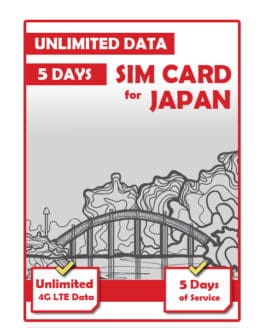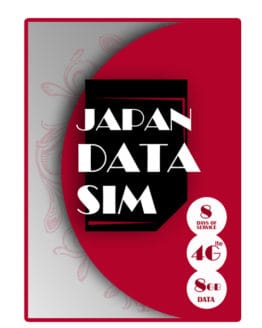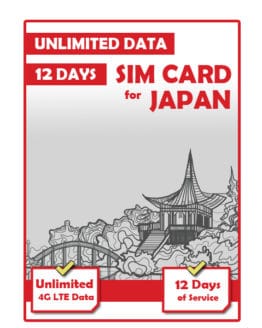Japan’s Tohoku region is home to some of the country’s most incredible nature retreats. It occupies the northeastern portion of the island of Honshu, and consists of many mountains, lakes, rivers, national parks, and historic landmarks. From Tokyo, it is very easily accessible via the Shinkansen, and makes for an excellent nature-filled detour. If want to check it out on your next trip to Japan, consider getting a JR East Tohoku Area Pass.
Introduction
The JR East Tohoku Area Pass is a regional pass by JR East available for non-Japanese passport holders staying 90 days or less in the country. With it, you can avail of unlimited rides on JR East operated train and bus lines in the designated Kanto and Tohoku areas on five selected days within a period of 14 days. You can travel from Tokyo to nearby areas, such as Nikko and Yokohama, and to as far north as Aomori and Akita.
Sales
The JR East Tohoku Area Pass costs 20,000 yen (if bought in Japan), or at a discounted price of 19,000 yen (if bought overseas).
| How much does the JR East Tohoku Area Pass cost? | ||
| If bought in Japan | Adults (12 years old and above) | 20,000 yen |
| Children (6 years old – 11 years old) | 10,000 yen | |
| If bought overseas | Adults (12 years old and above) | 19,000 yen |
| Children (6 years old – 11 years old) | 9,500 yen | |
If you are already in Japan, it is available at various JR East Travel Service Centers in Kanto and Tohoku.
| Where can you buy the JR East Tohoku Area Pass? | |
| Narita Airport Terminals 1, 2, and 3 | Haneda Airport International Terminal |
| Tokyo Station | Shinagawa Station |
| Ueno Station | Hamamatsucho Station |
| Shibuya Station | Shinjuku Station |
| Ikebukuro Station | Yokohama Station |
| Mito Station | Hachinohe Station |
| Akita Station | Morioka Station |
| Sendai Airport | Yamagata Station |
| Fukushima Station | Aomori Station |
If you are not in Japan yet, you can buy an e-ticket or exchange order online from the JR East official website. You need to have it printed out, so that you can exchange it for the actual pass at any of the JR East Travel Service Center locations enumerated above.
Validity
The day you buy your JR East Tohoku Area Pass in Japan or the day you exchange your e-ticket/exchange voucher in Japan is day 1 of the 14-day validity period of your pass. Within that period, you can select any five days when you want to use your pass. Your pass is valid until midnight of day 14.
The following JR and non-JR lines are covered by the JR East Tohoku Area Pass:
- All JR East Shinkansen or bullet trains in the Kanto and Tohoku areas
- All JR East limited express, express, and local trains in the designated region
- Tokyo Monorail
- Iwate Galaxy Railway
- Izu Kyuko Line
- Sendai Airport Transit
- Local JR buses from Aomori/Hachinohe to Lake Towada, from Morioka to Ryusendo Cave, from Utsunomiya to Twin Ring Motegi, from Naganohara-Kusatsuguchi Station to Kusatsu Onsen, and more
Usage
During your JR East Tohoku Area Pass’ validity period, you can enjoy unlimited train rides on many JR and non-JR lines in the Kanto and Tohoku regions (please refer to the list of covered train lines above).
If you want to use your pass, go to the manned ticket gate at the train station to get your pass stamped with the day’s date. Throughout the day, simply show your pass to a staff every time you enter and exit the ticket gates. Follow the same process for the other four days you choose to use your pass.
When riding the Shinkansen, you can go board a non-reserved ordinary car straight away, or drop by a JR Ticket Office or Travel Service Center before your desired departure time to get a seat reservation (free of charge) on a reserved ordinary car.
JR East Tohoku Area Pass Sample Itinerary
Day 1: Travel from Tokyo to Sendai
Take the Shinkansen from Tokyo Station to Sendai Station. The one-way trip takes an hour and a half, and is fully covered by your JR East Tohoku Area Pass. (Note: Without the pass, it costs about 11,000 yen.)
Spend a few days in Sendai to check out city and do a couple of day trips.
Some must-sees in Sendai are the Zuihoden Mausoleum, the final resting place of Date Masamune and his family; the Rinnoji Temple and the Osaki Hachimangu, the family temple and shrine of the Date clan; the Aoba Castle ruins; and the downtown area.
Highly recommended day trips from Sendai are Matsushima Bay, known as one of the three most scenic views of Japan, with a spectacular bay with several small islands covered in pine trees; and Yamadera, which has a 9th century temple on a mountainside. Via the local JR lines, each one-way trip only costs a few hundred yen, so it is better to save your JR East Tohoku Area Pass for other farther destinations.
Day 2: Day trip to Naruko Gorge
From Sendai Station, take the Shinkansen to Furukawa Station, and then transfer to a local JR train to Naruko Onsen Station. The one-way journey is an hour and a half long, and is fully covered by your JR East Tohoku Area Pass. (Note: Without the pass, it costs 3,000 yen.)
Every autumn season, Naruko Gorge transforms into a colorful display of vibrant red and orange foliage. You can hike one of the trails there to get the best views of the lush scenery.
Return to Sendai to spend the night.
Day 3: Go to Hirosaki via Aomori
From Sendai Station, the journey to Hirosaki Station via Shin-Aomori Station in Aomori involves one Shinkansen ride and one local train ride. It takes two and a half hours, and is fully covered by your JR Tohoku Area Pass. (Note: Without the pass, it costs about 11,500 yen. And, at this point of the trip, the train expenses add up to around 23,000 yen, so your pass has already paid off.)
In Hirosaki, you can spend the rest of the day exploring the Hirosaki Castle, which is a popular sakura viewing spot in spring; the Fujita Garden; and the Samurai District.
Spend the night in Aomori.
The next day, check out the different tourist attractions in Aomori City, such as the Furukawa Fish Market, the Hakkodamaru Ship, the Museum of Art, the Auga Fish Market, and the Jomon Site. You will be making use of the local buses to get around, so there is no need to use your JR East Tohoku Area Pass.
Day 4: Head down to Hiraizumi
From Shin-Aomori Station, the fastest way to reach Hiraizumi is by taking the Shinkansen to Morioka Station, and then transferring to the JR Tohoku Line to Hiraizumi Station. The one-way trip is about three hours long, and is fully covered by your JR East Tohoku Area Pass. (Note: Without the pass, it costs 7,700 yen.)
Spend a few days in Hiraizumi to have enough time to see not only the important world heritage historical sites like Chusonji Temple and Motsu-ji Temple in the city center, but also enjoy the incredible natural scenery around Geibeikei Gorge, Genbikei Gorge, and Takkoku no Iwaya on the outskirts. To get around, rent a bicycle or take the local buses.
Day 5: Return to Tokyo
From Hiraizumi Station, get on the JR Tohoku Line train to Ichinoseki Station, and then transfer to the Shinkansen headed to Tokyo Station. The journey takes three hours, and is fully covered by your JR East Tohoku Area Pass. (Note: Without the pass, it costs 13,000 yen.)
For more information on the JR East Tohoku Area Pass, visit the JR East official website.





